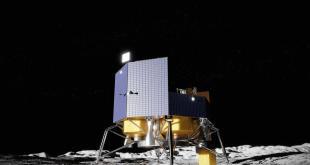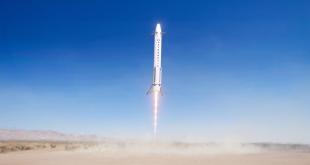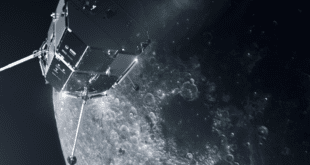As part of the partnership between SpaceWatch.Global and Jessica West/Opencanada.org, we have been granted permission to publish selected articles and texts. This is “The dark side of moon exploration”, originally published 22 August 2019.
Landing on the moon 50 years ago was a major achievement. But, as Jessica West writes, renewing a space race without checks and balances only spells trouble.
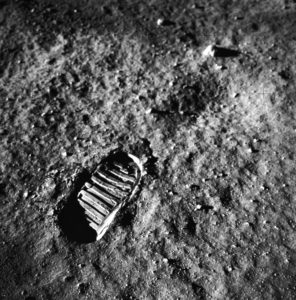
In the summer of 1969, the first human landed on the moon. Now, as the world celebrates that important milestone, a new moon race is developing.
This race is different. Rather than a sprint to the finish line, today’s race is a marathon. The goal is not just to get there, but to stay, creating a permanent human presence on the moon and beyond, within the next decade. While cooperation is essential to space exploration, this new race shows signs of reviving the existential competition of the past. The United States aims for pre-eminence in space. For China, space is part of comprehensive national power. Growing emphasis on outer space as a domain of warfare is fuelling a new arms race that risks military confrontation. How these tensions will interact with lunar exploration — and commercial ambitions — is not clear. The stakes have never been higher.
The first moon race unfolded in a world facing nuclear annihilation. The humans in today’s moon race face not only the prospect of nuclear war, but a self-inflicted climate crisis. Now, as then, the destruction of humanity seems possible, even imminent. The ability to access new worlds and planets can inspire — and may sustain — a new future. But we must avoid repeating past mistakes.
The new space race is about much more than flags and footprints: it’s a scramble for resources. Future moon missions are focused almost exclusively on the lunar south pole. Why? Because we know that it contains resources, including water ice necessary to sustain humans and to fuel spacecraft for longer journeys, and helium-3, a gas that may be capable of fuelling power through nuclear fusion.
Intensified by China’s historic robotic landing on the far side of the moon in January, the race already has several contestants. India, which launched its Chandrayaan 2 robotic mission in July, could become the fourth state to make a soft landing on the moon — and the first to visit the south pole. Japan and India are working on another moon mission. China’s future missions include a research base on the moon. The European Space Agency has a robotic lunar program and an interest in resource extraction. Luxembourg is funding commercial resource ventures. NASA’s new Artemis program is working with private and international partners, including Canada, to build the Lunar Gateway space station in orbit around the moon as a platform to return American astronauts to the lunar surface by 2024 and establish a permanent presence by 2028.
“The new space race is about much more than flags and footprints: it’s a scramble for resources.”
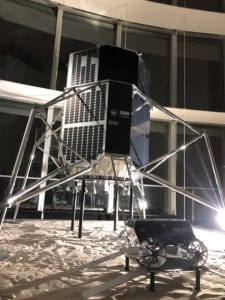
Non-state contestants are many, including Israeli non-profit SpaceIL, which in February launched the first private robotic lander to the moon, where it made a hard landing in April. Moon Express, a US company based in Silicon Valley, aims to be the first commercial enterprise to land on the moon and “unlock” its resources. Ispace and Astrobotic plan to shuttle items between Earth and the moon. Billionaires Elon Musk (SpaceX) and Jeff Bezos (Blue Origin) plan to establish human colonies in space.
While it’s not quite a free for all, efforts to regulate activities on the moon have so far proven difficult. Some general principles are in place. The Outer Space Treaty, in force since 1967, preserves outer space, including the moon, as a global commons to be used by all for peaceful purposes and for the benefit and interest of all. States must co-operate in exploring and using resources, and cannot appropriate resources for national benefit. In effect, the treaty aims to have states treat the moon as they treat Antarctica.
But efforts to operationalize these principles, as laid out in the supplementary 1979 moon agreement, failed when few signed on. Current US Vice President Mike Pence has asserted that those who arrive first — and stay — will write the rules and values of space. Instead of treating the moon like Antarctica, contestants in this new race could act as though they were on the high seas. In this model, resources would be free for the taking by the most powerful and innovative. While this model has clear economic benefits for some, we also need to think about the costs.
Before the competition gets out of hand, we need to determine the future we want for science, environmental protection, human culture and peace. We need to think about the mark we will leave on the moon itself and how that will impact far beyond its surface. Our record of protecting the space environment is already poor: we leave behind a lot of junk. At the same time there is interest but no requirement to protect human heritage — such as historical lunar landing sites — on the moon.
Before humans begin to settle on the moon and travel into deep space, we need to establish rules of behaviour that are based on the principles outlined in the Outer Space Treaty. We need to preserve a spirit of cooperation, even as we acknowledge the competitive nature of the contestants.

Some efforts are being made. The UN Committee on the Peaceful Uses of Outer Space works to enhance partnerships and international participation in space exploration. It also serves as a critical forum for information exchange, capacity building and transparency. And although we are moving away from the Antarctic model of governance in favour of settlement and exploitation, its modes of scientific cooperation, inspections and transparency can still guide us. Countries like Canada, which has been instrumental in space governance since the dawn of the space age, can lend a voice. Not only is Canada returning to the moon through cooperative efforts, but its scientists, private and public sectors can provide insights and lessons learned from its history with both resource extraction and colonization.
Space exploration is an activity that galvanizes not just nations, but all of humanity. The Apollo 11 landing on the moon was watched the world over. China’s landing on the far side of the moon was another global touchstone. We need to sustain that sentiment of collective aspiration and achievement. There are promising development models out there, including the effort to create a global Moon Village. But charting a new future ultimately requires a new vision that transcends narrow competition in favour of broader humanitarian goals and benefits.

The original can be find here – https://www.opencanada.org/features/dark-side-moon-exploration/ published 14 August 2019. Rights reserved – this publication is reproduced with permission from Jessica West.
Jessica West is the Project Manager for the annual Space Security Index published by Project Ploughshares.
 SpaceWatch.Global An independent perspective on space
SpaceWatch.Global An independent perspective on space

